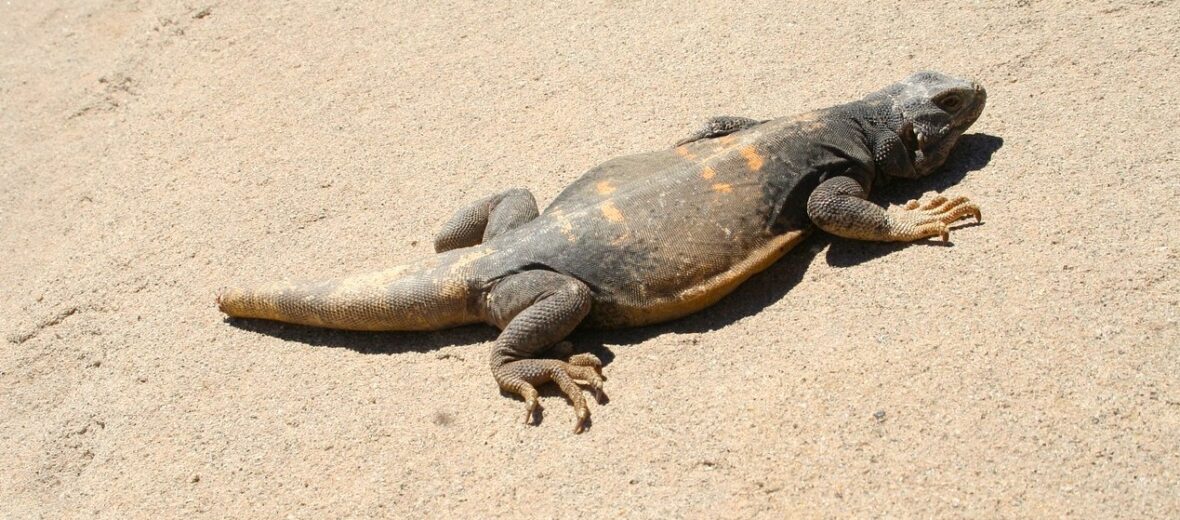
The Chuckwalla belongs to the iguana family. As such, they have some of the same cool features as an iggy (iguana). They expel salts through their noses and even have a parietal eye. Chucks can be found in the southwestern regions of North America and in the northern parts of Mexico. They can also be found on some islands, like the surrounding islands off the coast of the Baja California Peninsula.
First the Stats…
Scientific name: Sauromalus
Weight: Up to 2 lbs.
Length: Up to 20 inches
Lifespan: Up to 25 years
Now on to the Facts!
1.) Chuckwallas are able to subtly change their coloration to match their surroundings, by turning darker or lighter.
2.) These lizards also change their colors from light to dark to allow more or less sunlight in and aid in warming or cooling themselves off. The darker color will allow more sun in and the lighter color reflects more light.
3.) They are diurnal (active during the day).
4.) The chuckwalla is a herbivore (eats plant matter) that will occasionally eat insects. The majority of its diet is based on leaves, creosote bush, fruit, and desert flowers. Technically, they can be considered an omnivore (eats both plant and animal matter).
5.) Their primary predators are snakes, mammals, raptors, and of course humans collecting for the pet trade.
But wait, there’s more on the chuckwalla!
6.) When threatened, a chuckwalla will run and hide in rocky crevices, wedge themselves in, and inflate their bodies; preventing a predator from pulling it out.
7.) Males release a scent from the pores in their thighs that is used to mark their territory. They are also not only territorial, but solitary creatures.
Did you know…?
Chuckwallas, being part of the iguana family, have a parietal eye, this organ is used to alert iguanas of aerial dangers. Unlike their other 2 eyes, the parietal eye is simple and can only detect changes in light & dark.
8.) During colder months (October – March) they will brumate, as food is scarce.
9.) Breeding season lasts from April – July.
10.) Females lay eggs only during the rainy seasons as food is much more plentiful. They lay between 5 – 16 eggs.
But wait, there’s still more on the chuckwalla!
11.) Chucks also expel excess salts from their body, not by urination, but by sneezing salt out of their noses!
12.) They also don’t drink standing water, even if it is available. They, instead, get all the water they need from the plants they eat.
Now a Short Chuckwalla Video!
Also, check out the Critter Science YouTube channel. Videos added frequently!
Want to suggest a critter for me to write about? Let me know here.



